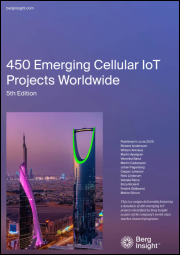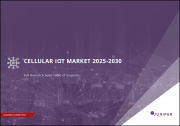
|
시장보고서
상품코드
1732025
세계의 셀룰러 IoT 시장 조사 보고서 : 산업 분석, 규모, 점유율, 성장, 동향 및 예측(2025-2033년)Global Cellular IoT Market Research Report- Industry Analysis, Size, Share, Growth, Trends and Forecast 2025 to 2033 |
||||||
세계의 셀룰러 IoT 시장 규모는 2024년 89억 7,000만 달러에서 2033년까지 724억 4,000만 달러로 성장하고, 2026-2033년의 예측 기간 동안 26.12%의 연평균 복합 성장률(CAGR)을 보일 전망입니다.
셀룰러 IoT 시장은 다양한 산업 분야에서 커넥티드 디바이스 및 스마트 솔루션에 대한 수요가 지속적으로 증가함에 따라 괄목할 만한 성장이 예상됩니다. 셀룰러 IoT 기술은 디바이스가 셀룰러 네트워크를 통해 통신할 수 있도록 하여 스마트 시티, 산업 자동화, 자산 추적과 같은 용도에 안정적이고 확장 가능한 연결성을 제공합니다. 기업들이 IoT의 이점을 활용하려는 경향이 높아짐에 따라 셀룰러 IoT 솔루션의 채택이 급증하고 시장 확대가 가속화될 것으로 예측됩니다.
기술의 발전은 셀룰러 IoT 시장에 큰 영향을 미치고 있으며, 5G 및 협대역 IoT(NB-IoT)와 같은 네트워크 기술 혁신은 IoT 디바이스의 연결 옵션을 향상시키고 있습니다. 이러한 발전은 더 빠른 데이터 전송, 더 낮은 지연 시간, 더 높은 에너지 효율을 가능하게 하여 셀룰러 IoT 솔루션이 다양한 용도에 더욱 매력적으로 다가갈 수 있도록 하고 있습니다. 이러한 기술이 계속 발전함에 따라 셀룰러 IoT 디바이스의 성능이 향상될 뿐만 아니라 헬스케어, 교통, 농업 등 다양한 분야에서 잠재적인 이용 사례가 확대될 것입니다. 셀룰러 IoT 시스템에 인공지능과 머신러닝을 통합하여 보다 스마트한 데이터 분석과 실시간 의사결정을 가능하게 함으로써 혁신을 더욱 촉진하고 있습니다.
또한, 셀룰러 IoT 시장은 인프라에 대한 투자 증가와 디지털 전환에 대한 관심이 높아지면서 수혜를 받고 있습니다. 기업과 정부가 스마트 인프라 개발에 우선순위를 두면서, 신뢰할 수 있고 안전한 셀룰러 연결에 대한 수요가 증가할 것으로 예측됩니다. 이러한 추세는 통신사업자, 기술 개발자, 최종 사용자 간의 협업을 촉진하고, 특정 산업의 요구를 충족하는 맞춤형 솔루션의 창출을 촉진할 것으로 보입니다. 기술 발전, 인프라 투자, 시장 수요의 결합으로 셀룰러 IoT 분야는 지속적인 성장을 이루며 커넥티드 기술의 미래에 큰 기여를 할 것입니다.
당사의 보고서는 고객에게 다양한 산업과 시장에 대한 종합적이고 실행 가능한 인사이트를 제공하기 위해 세심하게 작성되었습니다. 각 보고서에는 시장 상황을 철저히 이해하기 위한 몇 가지 중요한 요소가 포함되어 있습니다.
시장 개요 : 정의, 분류, 산업 현황 등 시장에 대한 자세한 내용을 소개합니다.
시장 성장 촉진요인 : 시장 성장에 영향을 미치는 주요 촉진요인, 억제요인, 기회 및 과제를 상세하게 분석합니다. 이 섹션에서는 기술 발전, 규제 변화, 새로운 트렌드 등의 요인을 검토합니다.
세분화 분석 : 제품 유형, 용도, 최종 사용자, 지역 등의 기준에 따라 시장을 명확한 부문으로 분류합니다. 이 분석을 통해 각 부문의 성과와 잠재력을 파악할 수 있습니다.
경쟁 구도: 시장 점유율, 제품 포트폴리오, 전략적 이니셔티브, 재무 실적 등 주요 시장 기업에 대한 종합적인 평가를 제공합니다. 주요 기업들이 채택하고 있는 경쟁 역학 및 주요 전략에 대한 고찰을 제공합니다.
시장 예측 : 과거 데이터와 현재 시장 상황을 바탕으로 일정 기간 동안 시장 규모와 성장 추세를 예측합니다. 여기에는 정량적 분석과 미래 시장 궤적을 보여주는 그래프 표시가 포함됩니다.
지역 분석 : 지역별 시장 성과를 평가하고 주요 시장 및 지역 동향을 파악할 수 있습니다. 지역 시장 역학 및 비즈니스 기회를 이해하는 데 도움이 됩니다.
새로운 트렌드와 기회 : 현재 시장 동향과 새로운 시장 동향, 기술 혁신, 잠재적 투자 대상 분야를 파악합니다. 미래 시장 개척 및 성장 전망에 대한 인사이트를 제공합니다.
목차
제1장 서문
제2장 주요 요약
- 시장 하이라이트
- 세계 시장 현황
제3장 셀룰러 IoT 산업 분석
- 서론 : 시장 역학
- 시장 성장 촉진요인
- 시장 성장 억제요인
- 시장 기회
- 업계 동향
- Five Forces 분석
- 시장의 매력 분석
제4장 밸류체인 분석
- 밸류체인 분석
- 원재료 분석
- 원재료 리스트
- 원재료 제조업체 리스트
- 주요 원재료 가격 동향
- 잠재적 바이어 리스트
- 마케팅 채널
- 직접 마케팅
- 간접 마케팅
- 마케팅 채널 발전 동향
제5장 셀룰러 IoT 세계 시장 분석 : 컴포넌트별
- 개요 : 컴포넌트별
- 실적 및 예측 데이터 분석 : 컴포넌트별
- 하드웨어
- 소프트웨어
- 서비스
제6장 셀룰러 IoT 세계 시장 분석 : 기술별
- 개요 : 기술별
- 실적 및 예측 데이터 분석 : 기술별
- 2G
- 3G
- 4G
- LTE-M
- NB-LTE-M
- NB-IoT
- 5G
제7장 세계의 셀룰러 IoT 시장 분석 : 용도별
- 개요 : 용도별
- 실적 및 예측 데이터 분석 : 용도별
- 알람 및 감지기
- 스마트 가전
- 스마트 미터
- 스마트 주차
- 스마트 가로등
- 감시 및 모니터링
- 트래커
- 웨어러블 단말기
- 기타
제8장 셀룰러 IoT 세계 시장 분석 : 업계별
- 개요 : 업계별
- 실적 및 예측 데이터 분석 : 업계별
- 농업
- 자동차 및 운송
- 빌딩 자동화
- 소비자 일렉트로닉스
- 에너지 및 유틸리티
- 헬스케어
- 산업 및 제조
- 소매
- 스마트 시티
- 기타
제9장 셀룰러 IoT 세계 시장 분석 : 지역별
- 지역별 전망
- 서론
- 북미의 판매 분석
- 개요, 분석과 예측
- 북미 : 부문별
- 북미 : 국가별
- 미국
- 캐나다
- 멕시코
- 유럽의 판매 분석
- 개요, 분석과 예측
- 유럽 부문별
- 유럽 : 국가별
- 영국
- 프랑스
- 독일
- 이탈리아
- 러시아
- 기타 유럽
- 아시아태평양의 판매 분석
- 개요, 분석과 예측
- 아시아태평양 부문별
- 아시아태평양 : 국가별
- 중국
- 인도
- 일본
- 한국
- 호주
- 동남아시아
- 기타 아시아태평양
- 라틴아메리카의 판매 분석
- 개요, 분석과 예측
- 라틴아메리카 부문별
- 라틴아메리카 : 국가별
- 브라질
- 아르헨티나
- 페루
- 칠레
- 기타 라틴아메리카
- 중동 및 아프리카의 판매 분석
- 개요, 분석과 예측
- 중동 및 아프리카 부문별
- 중동 및 아프리카 : 국가별 리스트
- 사우디아라비아
- 아랍에미리트(UAE)
- 이스라엘
- 남아프리카
- 기타 중동 및 아프리카
제10장 셀룰러 IoT 기업 경쟁 구도
- 셀룰러 IoT 시장 경쟁
- 제휴, 협력 및 합의
- 인수합병(M&A)
- 신제품 발표
- 기타 개발
제11장 기업 개요
- 주요 기업의 시장 점유율 분석
- 시장 집중도
- Quectel
- Thales Group
- Fibocom Wireless
- Telit Communications
- U-Blox Holding
- Sierra Wireless
- Qualcomm
- Mediatek
- UNISOC Technologies
- Intel
- Nordic Semiconductor
- Murata Manufacturing
- Analog Devices
- Qorvo
- Skyworks
Global Cellular IoT Market size is anticipated to grow from USD 8.97 Billion in 2024 to USD 72.44 Billion by 2033, showcasing a robust Compound Annual Growth Rate (CAGR) of 26.12% during the forecast period of 2026 to 2033.
The cellular IoT market is poised for remarkable growth as the demand for connected devices and smart solutions continues to rise across various industries. Cellular IoT technology enables devices to communicate over cellular networks, providing reliable and scalable connectivity for applications such as smart cities, industrial automation, and asset tracking. As organizations increasingly seek to leverage the benefits of IoT, the adoption of cellular IoT solutions is expected to surge, driving market expansion.
Technological advancements are significantly influencing the cellular IoT market, with innovations in network technologies, such as 5G and narrowband IoT (NB-IoT), enhancing connectivity options for IoT devices. These advancements are enabling faster data transmission, lower latency, and improved energy efficiency, making cellular IoT solutions more attractive for a wide range of applications. As these technologies continue to evolve, they will not only enhance the performance of cellular IoT devices but also expand their potential use cases across various sectors, including healthcare, transportation, and agriculture. The integration of artificial intelligence and machine learning into cellular IoT systems is further driving innovation, allowing for smarter data analytics and real-time decision-making.
Moreover, the cellular IoT market is benefiting from increasing investments in infrastructure and the growing emphasis on digital transformation. As businesses and governments prioritize the development of smart infrastructure, the demand for reliable and secure cellular connectivity is expected to rise. This trend is likely to drive collaboration between telecommunications providers, technology developers, and end-users, fostering the creation of tailored solutions that meet specific industry needs. The convergence of technological advancements, infrastructure investments, and market demand positions the cellular IoT sector for sustained growth and significant contributions to the future of connected technologies.
Our reports are meticulously crafted to provide clients with comprehensive and actionable insights into various industries and markets. Each report encompasses several critical components to ensure a thorough understanding of the market landscape:
Market Overview: A detailed introduction to the market, including definitions, classifications, and an overview of the industry's current state.
Market Dynamics: In-depth analysis of key drivers, restraints, opportunities, and challenges influencing market growth. This section examines factors such as technological advancements, regulatory changes, and emerging trends.
Segmentation Analysis: Breakdown of the market into distinct segments based on criteria like product type, application, end-user, and geography. This analysis highlights the performance and potential of each segment.
Competitive Landscape: Comprehensive assessment of major market players, including their market share, product portfolio, strategic initiatives, and financial performance. This section provides insights into the competitive dynamics and key strategies adopted by leading companies.
Market Forecast: Projections of market size and growth trends over a specified period, based on historical data and current market conditions. This includes quantitative analyses and graphical representations to illustrate future market trajectories.
Regional Analysis: Evaluation of market performance across different geographical regions, identifying key markets and regional trends. This helps in understanding regional market dynamics and opportunities.
Emerging Trends and Opportunities: Identification of current and emerging market trends, technological innovations, and potential areas for investment. This section offers insights into future market developments and growth prospects.
SEGMENTATION COVERED IN THE REPORT
By Component
- Hardware
- Software
- Services
By Technology
- 2G
- 3G
- 4G
- LTE-M
- NB-LTE-M
- NB-IoT
- 5G
By Application
- Alarms & Detectors
- Smart Appliances
- Smart Metering
- Smart Parking
- Smart Street Light
- Surveillance & Monitoring
- Trackers
- Wearable Devices
- Others
By Vertical
- Agriculture
- Automotive & Transportation
- Building Automation
- Consumer Electronics
- Energy & Utilities
- Healthcare
- Industrial/ Manufacturing
- Retail
- Smart Cities
- Others
- COMPANIES PROFILED
- Quectel
- Thales Group
- Fibocom Wireless
- Telit Communications
- u-blox Holding
- Sierra Wireless
- Qualcomm
- Mediatek
- UNISOC Technologies
- Intel
- Nordic Semiconductor
- Murata Manufacturing
- Analog Devices
- Qorvo
- Skyworks
- The above list can be customized.
TABLE OF CONTENTS
1. PREFACE
- 1.1. Report Description
- 1.1.1 Objective
- 1.1.2 Target Audience
- 1.1.3 Unique Selling Proposition (USP) & offerings
- 1.2. Research Scope
- 1.3. Research Methodology
- 1.3.1 Market Research Process
- 1.3.2 Market Research Methodology
2. EXECUTIVE SUMMARY
- 2.1. Highlights of Market
- 2.2. Global Market Snapshot
3. CELLULAR IOT INDUSTRY ANALYSIS
- 3.1. Introduction - Market Dynamics
- 3.2. Market Drivers
- 3.3. Market Restraints
- 3.4. Opportunities
- 3.5. Industry Trends
- 3.6. Poerter's Five Force Analysis
- 3.7. Market Attractiveness Analysis
- 3.7.1 Market Attractiveness Analysis By Component
- 3.7.2 Market Attractiveness Analysis By Technology
- 3.7.3 Market Attractiveness Analysis By Application
- 3.7.4 Market Attractiveness Analysis By Vertical
- 3.7.5 Market Attractiveness Analysis By Region
4. VALUE CHAIN ANALYSIS
- 4.1. Value Chain Analysis
- 4.2. Raw Material Analysis
- 4.2.1 List of Raw Materials
- 4.2.2 Raw Material Manufactures List
- 4.2.3 Price Trend of Key Raw Materials
- 4.3. List of Potential Buyers
- 4.4. Marketing Channel
- 4.4.1 Direct Marketing
- 4.4.2 Indirect Marketing
- 4.4.3 Marketing Channel Development Trend
5. GLOBAL CELLULAR IOT MARKET ANALYSIS BY COMPONENT
- 5.1. Overview By Component
- 5.2. Historical and Forecast Data Analysis By Component
- 5.3. Hardware Historic and Forecast Sales By Regions
- 5.4. Software Historic and Forecast Sales By Regions
- 5.5. Services Historic and Forecast Sales By Regions
6. GLOBAL CELLULAR IOT MARKET ANALYSIS BY TECHNOLOGY
- 6.1. Overview By Technology
- 6.2. Historical and Forecast Data Analysis By Technology
- 6.3. 2G Historic and Forecast Sales By Regions
- 6.4. 3G Historic and Forecast Sales By Regions
- 6.5. 4G Historic and Forecast Sales By Regions
- 6.6. LTE-M Historic and Forecast Sales By Regions
- 6.7. NB-LTE-M Historic and Forecast Sales By Regions
- 6.8. NB-IoT Historic and Forecast Sales By Regions
- 6.9. 5G Historic and Forecast Sales By Regions
7. GLOBAL CELLULAR IOT MARKET ANALYSIS BY APPLICATION
- 7.1. Overview By Application
- 7.2. Historical and Forecast Data Analysis By Application
- 7.3. Alarms & Detectors Historic and Forecast Sales By Regions
- 7.4. Smart Appliances Historic and Forecast Sales By Regions
- 7.5. Smart Metering Historic and Forecast Sales By Regions
- 7.6. Smart Parking Historic and Forecast Sales By Regions
- 7.7. Smart Street Light Historic and Forecast Sales By Regions
- 7.8. Surveillance & Monitoring Historic and Forecast Sales By Regions
- 7.9. Trackers Historic and Forecast Sales By Regions
- 7.10. Wearable Devices Historic and Forecast Sales By Regions
- 7.11. Others Historic and Forecast Sales By Regions
8. GLOBAL CELLULAR IOT MARKET ANALYSIS BY VERTICAL
- 8.1. Overview By Vertical
- 8.2. Historical and Forecast Data Analysis By Vertical
- 8.3. Agriculture Historic and Forecast Sales By Regions
- 8.4. Automotive & Transportation Historic and Forecast Sales By Regions
- 8.5. Building Automation Historic and Forecast Sales By Regions
- 8.6. Consumer Electronics Historic and Forecast Sales By Regions
- 8.7. Energy & Utilities Historic and Forecast Sales By Regions
- 8.8. Healthcare Historic and Forecast Sales By Regions
- 8.9. Industrial/ Manufacturing Historic and Forecast Sales By Regions
- 8.10. Retail Historic and Forecast Sales By Regions
- 8.11. Smart Cities Historic and Forecast Sales By Regions
- 8.12. Others Historic and Forecast Sales By Regions
9. GLOBAL CELLULAR IOT MARKET ANALYSIS BY GEOGRAPHY
- 9.1. Regional Outlook
- 9.2. Introduction
- 9.3. North America Sales Analysis
- 9.3.1 Overview, Historic and Forecast Data Sales Analysis
- 9.3.2 North America By Segment Sales Analysis
- 9.3.3 North America By Country Sales Analysis
- 9.3.4 United States Sales Analysis
- 9.3.5 Canada Sales Analysis
- 9.3.6 Mexico Sales Analysis
- 9.4. Europe Sales Analysis
- 9.4.1 Overview, Historic and Forecast Data Sales Analysis
- 9.4.2 Europe By Segment Sales Analysis
- 9.4.3 Europe By Country Sales Analysis
- 9.4.4 United Kingdom Sales Analysis
- 9.4.5 France Sales Analysis
- 9.4.6 Germany Sales Analysis
- 9.4.7 Italy Sales Analysis
- 9.4.8 Russia Sales Analysis
- 9.4.9 Rest Of Europe Sales Analysis
- 9.5. Asia Pacific Sales Analysis
- 9.5.1 Overview, Historic and Forecast Data Sales Analysis
- 9.5.2 Asia Pacific By Segment Sales Analysis
- 9.5.3 Asia Pacific By Country Sales Analysis
- 9.5.4 China Sales Analysis
- 9.5.5 India Sales Analysis
- 9.5.6 Japan Sales Analysis
- 9.5.7 South Korea Sales Analysis
- 9.5.8 Australia Sales Analysis
- 9.5.9 South East Asia Sales Analysis
- 9.5.10 Rest Of Asia Pacific Sales Analysis
- 9.6. Latin America Sales Analysis
- 9.6.1 Overview, Historic and Forecast Data Sales Analysis
- 9.6.2 Latin America By Segment Sales Analysis
- 9.6.3 Latin America By Country Sales Analysis
- 9.6.4 Brazil Sales Analysis
- 9.6.5 Argentina Sales Analysis
- 9.6.6 Peru Sales Analysis
- 9.6.7 Chile Sales Analysis
- 9.6.8 Rest of Latin America Sales Analysis
- 9.7. Middle East & Africa Sales Analysis
- 9.7.1 Overview, Historic and Forecast Data Sales Analysis
- 9.7.2 Middle East & Africa By Segment Sales Analysis
- 9.7.3 Middle East & Africa By Country Sales Analysis
- 9.7.4 Saudi Arabia Sales Analysis
- 9.7.5 UAE Sales Analysis
- 9.7.6 Israel Sales Analysis
- 9.7.7 South Africa Sales Analysis
- 9.7.8 Rest Of Middle East And Africa Sales Analysis
10. COMPETITIVE LANDSCAPE OF THE CELLULAR IOT COMPANIES
- 10.1. Cellular IoT Market Competition
- 10.2. Partnership/Collaboration/Agreement
- 10.3. Merger And Acquisitions
- 10.4. New Product Launch
- 10.5. Other Developments
11. COMPANY PROFILES OF CELLULAR IOT INDUSTRY
- 11.1. Top Companies Market Share Analysis
- 11.2. Market Concentration Rate
- 11.3. Quectel
- 11.3.1 Company Overview
- 11.3.2 Company Revenue
- 11.3.3 Products
- 11.3.4 Recent Developments
- 11.4. Thales Group
- 11.4.1 Company Overview
- 11.4.2 Company Revenue
- 11.4.3 Products
- 11.4.4 Recent Developments
- 11.5. Fibocom Wireless
- 11.5.1 Company Overview
- 11.5.2 Company Revenue
- 11.5.3 Products
- 11.5.4 Recent Developments
- 11.6. Telit Communications
- 11.6.1 Company Overview
- 11.6.2 Company Revenue
- 11.6.3 Products
- 11.6.4 Recent Developments
- 11.7. U-Blox Holding
- 11.7.1 Company Overview
- 11.7.2 Company Revenue
- 11.7.3 Products
- 11.7.4 Recent Developments
- 11.8. Sierra Wireless
- 11.8.1 Company Overview
- 11.8.2 Company Revenue
- 11.8.3 Products
- 11.8.4 Recent Developments
- 11.9. Qualcomm
- 11.9.1 Company Overview
- 11.9.2 Company Revenue
- 11.9.3 Products
- 11.9.4 Recent Developments
- 11.10. Mediatek
- 11.10.1 Company Overview
- 11.10.2 Company Revenue
- 11.10.3 Products
- 11.10.4 Recent Developments
- 11.11. UNISOC Technologies
- 11.11.1 Company Overview
- 11.11.2 Company Revenue
- 11.11.3 Products
- 11.11.4 Recent Developments
- 11.12. Intel
- 11.12.1 Company Overview
- 11.12.2 Company Revenue
- 11.12.3 Products
- 11.12.4 Recent Developments
- 11.13. Nordic Semiconductor
- 11.13.1 Company Overview
- 11.13.2 Company Revenue
- 11.13.3 Products
- 11.13.4 Recent Developments
- 11.14. Murata Manufacturing
- 11.14.1 Company Overview
- 11.14.2 Company Revenue
- 11.14.3 Products
- 11.14.4 Recent Developments
- 11.15. Analog Devices
- 11.15.1 Company Overview
- 11.15.2 Company Revenue
- 11.15.3 Products
- 11.15.4 Recent Developments
- 11.16. Qorvo
- 11.16.1 Company Overview
- 11.16.2 Company Revenue
- 11.16.3 Products
- 11.16.4 Recent Developments
- 11.17. Skyworks
- 11.17.1 Company Overview
- 11.17.2 Company Revenue
- 11.17.3 Products
- 11.17.4 Recent Developments



















